We don’t have large block, it’s less than 800sqm and it’s got a bit of a slope to it. Despite this, we have managed to create a garden that feeds us and a good deal of the local wildlife.
When we moved in the front and back yard had grass. That’s it. Which of course was perfect as it’s the gardening equivalent of a blank slate, as these photos show.
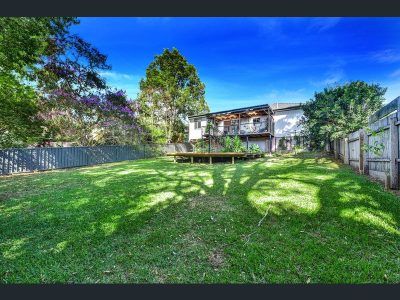

For a while we didn’t do much. As David Holmgren says, “don’t just do something, stand there”. The idea of course is to observe the immediate environment to allow for better planning. One of our first investments was a 12, 500L water tank. It’s position is in a shaded part of the yard which wasn’t really suitable for growing anything so it was the obvious choice. The next big project was to build a raised vegetable patch between the house and the boundary fence. Where we live is in the subtropical zone which means we get a fair amount of rain so a raised bed was the obvious choice. There was plenty of left over colourbond CGI from the workshop I built so that was repurposed for the garden bed. There were also two el-cheapo colourbond raised beds from Aldi already in the back yard so they were transferred to the front and put to good use. That part of the yard is now productive and getting easier to maintain each season. Our garden’s name is “Today’s Garden” because today’s garden is different to yesterdays garden and next weeks garden. It embodies the fluid nature of the growth and transition of things.
The verge
Our street runs through what was once a pineapple farm. The soil is a rich red/brown, high in iron oxide. At first it lacked organic matter, but each season the beds are improved using compost, manure and mulch. But I’m getting ahead of myself. As you can see from the above photo of our front yard, there’s heaps of space on the verge. Not only do I see lawn as a waste of space, it was a pain in the arse to mow on the steep sections. n our local government area (LGA) you are responsible for maintaining the verge, but you are not supposed to establish a garden there. So we began to plant of course. Our basic design is food plants interspersed with native shrubs and flowers. It’s almost at capacity, but there’s always room for one more plant…
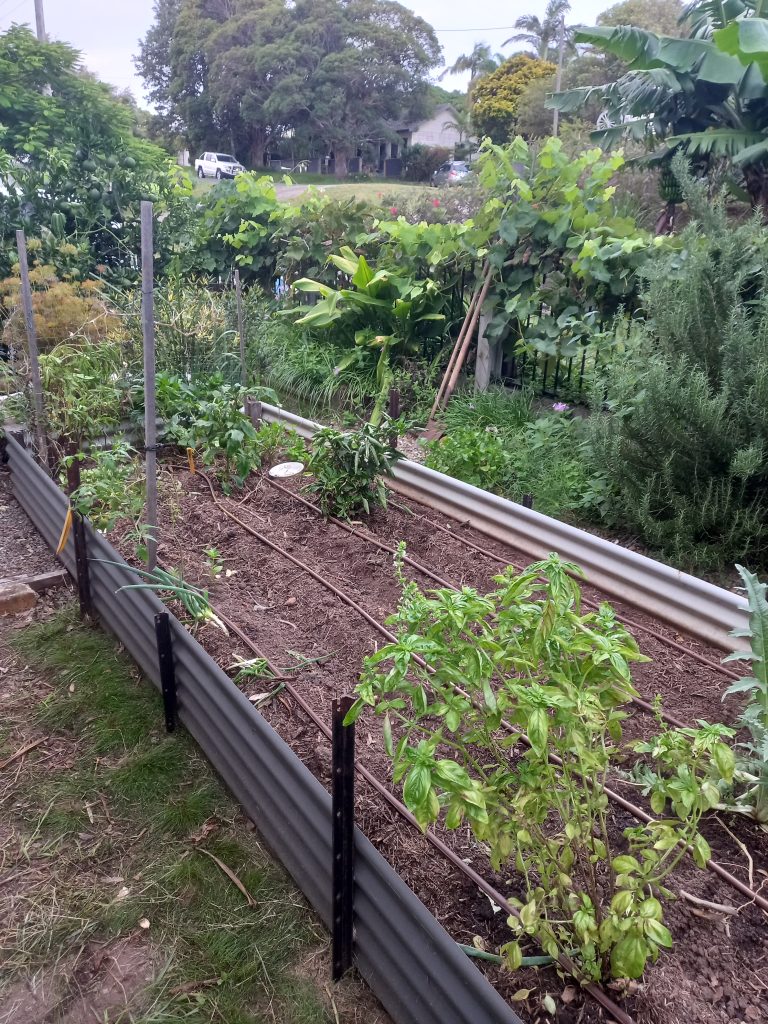

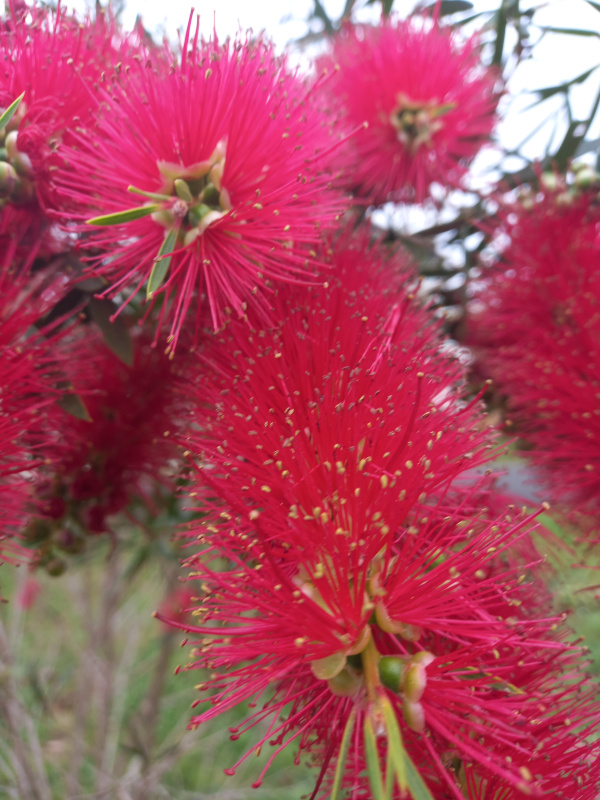
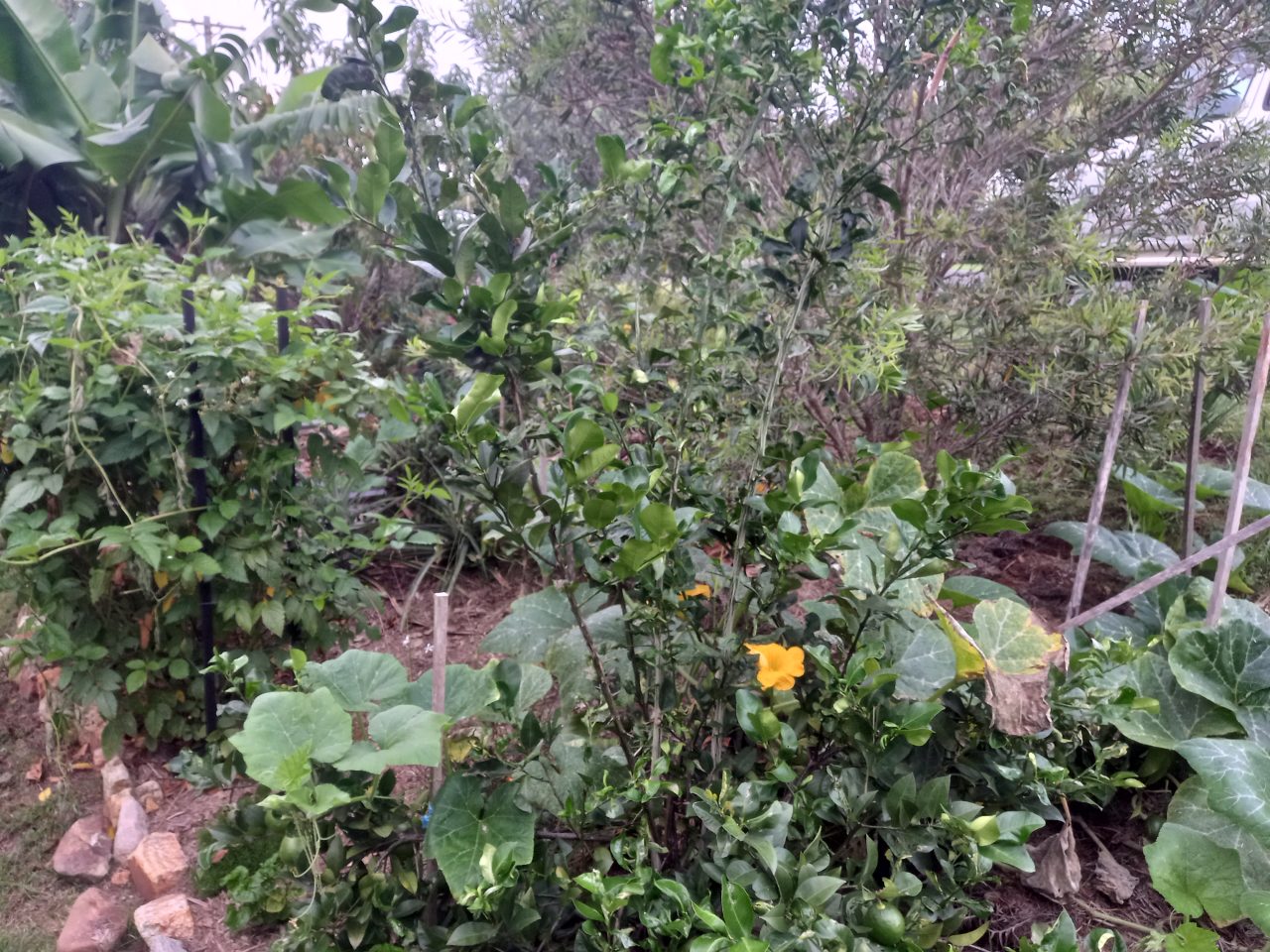
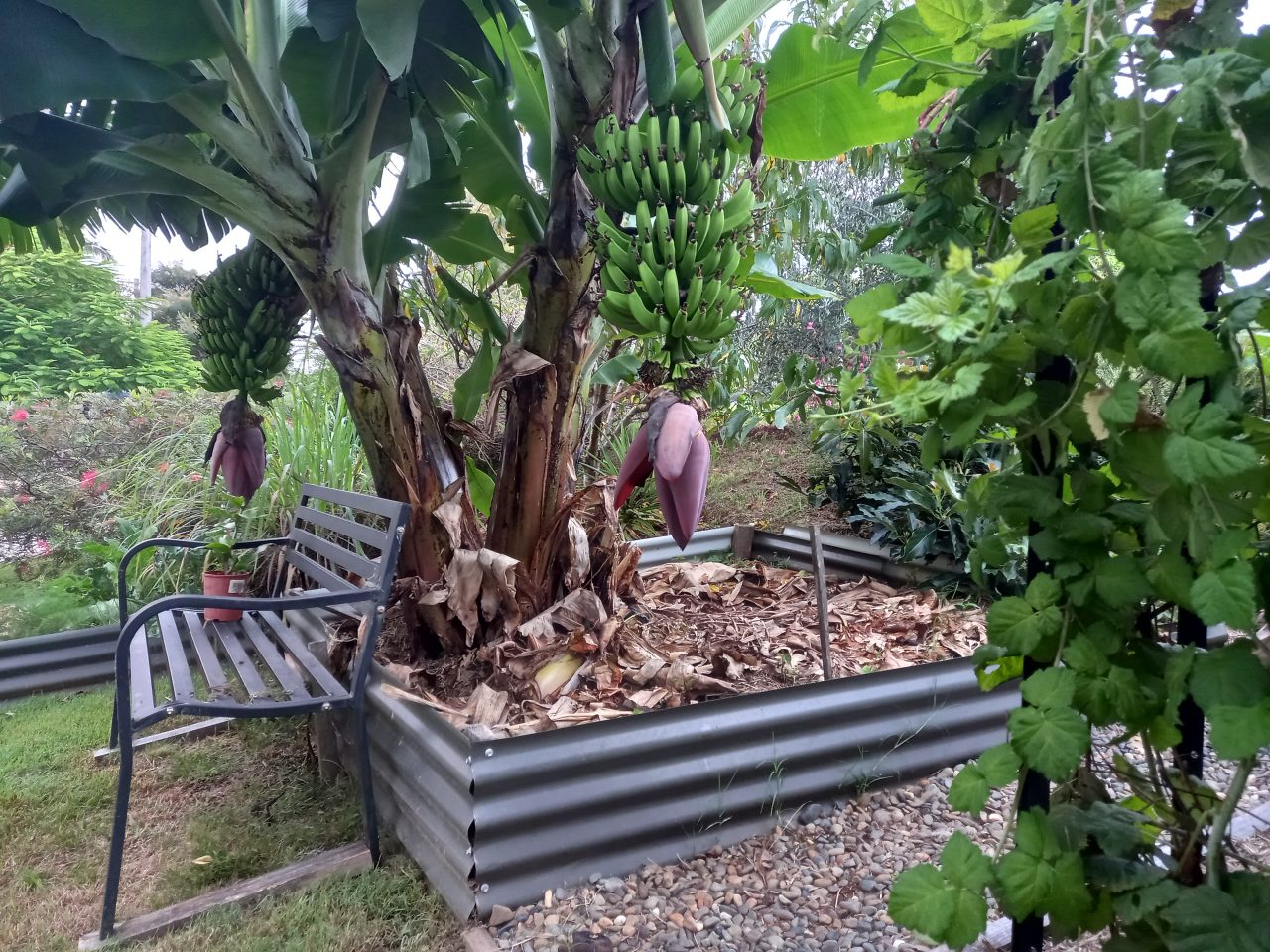
The importance of natives
As I’ve already mentioned, we’ve planted a selection of natives. In both the front and back yards, the plants were selected for their suitability as food for the local wildlife. More than a dozen species of birds and countless insects flock to our yard to feast on the flowers of our natives. Some, like the Grevillea, flower all year round so the locals can get their feed of junk food. Butterflies, native bees, wasps, moths, the list goes on. So many insects are attracted to native flowers and for me, this wasn’t really obvious until I observed it happening here. The small space of the verge and the location of overhead power lines sadly prevented us from planting koala food trees.
Water
Water is a feature in both the front and back yards. The back yard has a large clay bird bath situated high above the back deck with a clear area all around the base so there is nowhere for a cat to hide. It’s used so often that we have to refill it almost on a daily basis. In the front yard there is a pond made from an old spa. It contains papyrus reeds along with some Kang Kong and is home to a school of Pacific Blue Eyes. The “blue eyes” are a native fish that will eat mosquito larva, but not frogs eggs so they’re good to have around. The pond is largely self regulating and the fish are even breeding from season to season.
One disappointing development that we can not find a concrete explanation for is the disappearance of our frog population. Up until 12 or so months ago, we had a healthy, vocal population of frogs who had made homes in our front and back yards. They would call out at night, sometimes sitting on the lids of the wheelie bins, amplifying their calls. But lately, nothing. This last summer was the first season since we installed the pond where we didn’t get any eggs laid in the water. We haven’t heard a single croak for many months and it’s a bit of a worry. Further investigation needed I think.